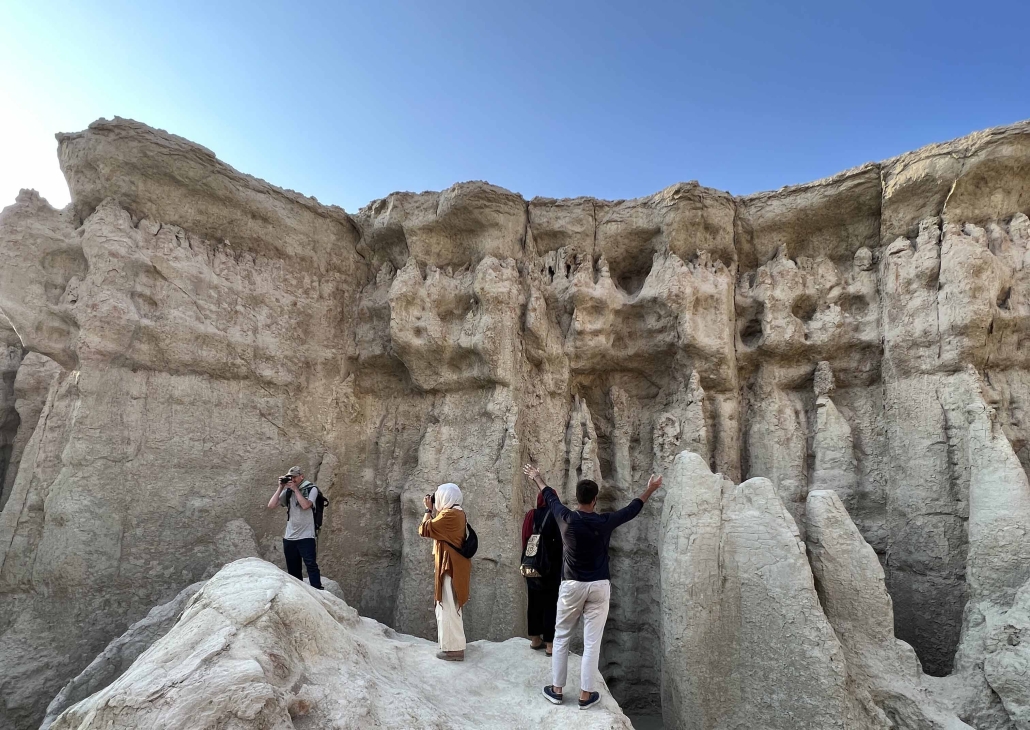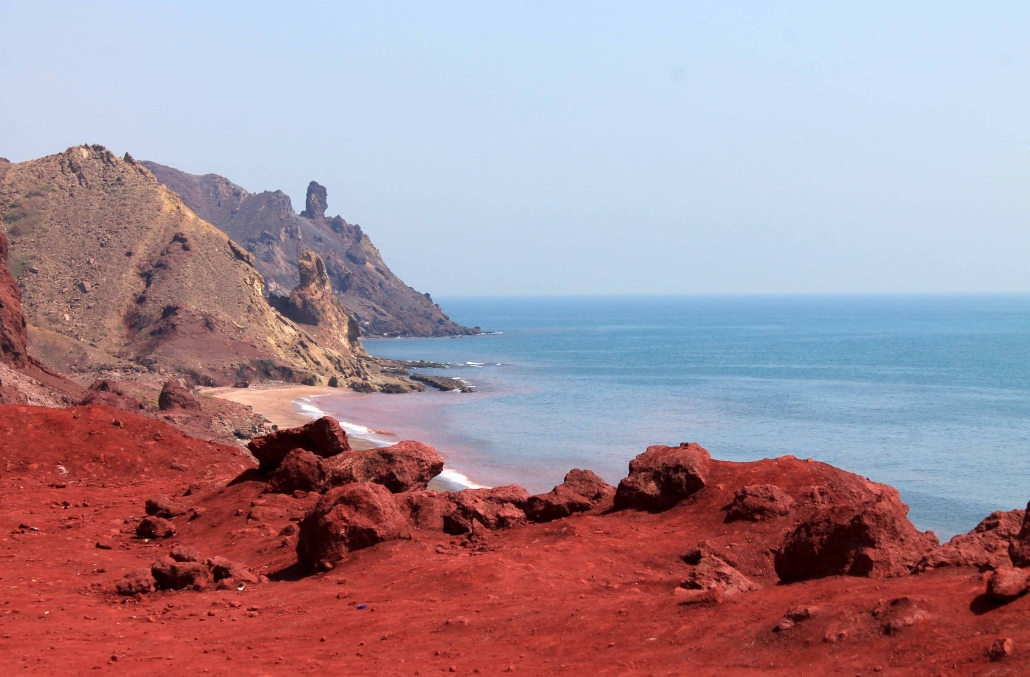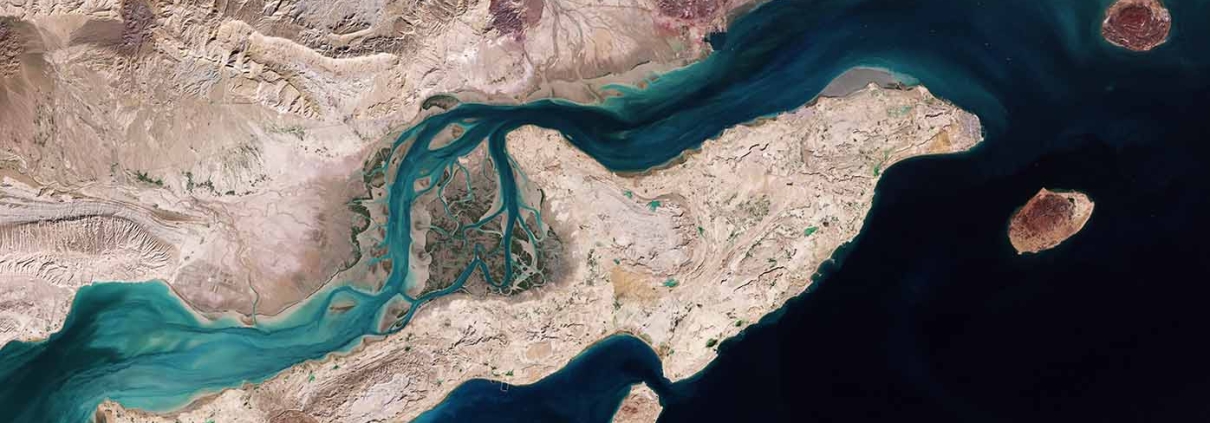Why Visiting Qeshm Island, Gem of the Persian Gulf
Did you know that Iran boasts several islands, and well, rather gorgeous ones! Located in the Persian Gulf, the main and biggest island is Qeshm. It’s a perfect destination to swim in crystal clear waters, but not only: Visiting Qeshm Island unfolds many more interesting aspects that makes it a captivating place to explore!
Visiting Qeshm, the Largest Island in the Persian Gulf
Most travelers know Isfahan, Kashan, Yazd, and Shiraz as the must-sees of Iran: they are the historical and emblematic Persia. Yet, Iran has several regions with dramatically different landscapes and cultures. One of these singular locations is in the Persian Gulf: Qeshm island.
Qeshm island offers another perspective on Iran, with breathtaking landscapes and fascinating culture. Even for travelers who just have a short time in Iran, it’s possible to visit the islands over a few days, as it’s connected with daily flights to Tehran and weekly flights to Shiraz, Isfahan and Mashhad.
Qeshm also offers four weekly flights to Dubai, making it convenient to enter or exit the country. It’s interesting to note that not only you can collect your visa on arrival at Qeshm international airport, but visitors are also allowed to stay on the island for up to one month without a visa.
So, now that you know it’s easy to make a quick visit to Qeshm Island, let’s discover the reasons why you shouldn’t miss visiting the largest island in the Persian Gulf!
The First UNESCO Geopark in the Middle East
If you’re an amateur geologist or simply looking breathtaking landscapes, Qeshm is your playground! The island has been registered as a UNESCO Global Geopark since 2006 as it possesses a great variety of rare geological phenomena. The island also is a refuge for many animals and species of birds, which can be observed in the protected area of the Mangrove Forest.
The most singular geosites are Chahkooh Canyon and The Valley of Stars. Both were created through time by the erosion caused by the sand and the wind over the millenniums and have resulted in spectacular sites. But Qeshm also has another geological wonder, which is the Salt Dome, holding the largest salt cave in the world. Besides these sites, the whole island displays breathtaking landscapes with limestone mountains and seaside roads.

South of Iran: A Singular Culture
One of the most interesting parts of visiting Qeshm is discovering a different culture. In term of traditions, the island shares little in common with the mainland. Take the language for instance: if everyone understands Persian here, it’s only the second language. On Qeshm, people speak their own language, a mix of Persian, Arab, Hindi, English and Portuguese. It reflects the history of the island: colonization by the British and Portuguese on one side, and trade by boat with Oman, Africa and India on the other side.
Unlike the majority of Iran’s Shia population, Qeshm’s inhabitants are predominantly Sunni Muslims. Consequently, their traditions and celebrations align more closely with neighboring Arab countries than with the rest of Iran. Most people in Qeshm still wear traditional clothes: a long white robe for men, similar to what can be found in the Gulf countries, and very colorful dresses and pants for women. Older generations of women also still wear a mask to cover part of their face, called Borghe.
Beyond language and attire, food is also different in the island, with a lot of seafood and spices. Music, too, plays a very important part of the island’s identity, with specific musical performances and instruments, with drums playing an important part. These rhythmic gatherings remind of wedding ceremonies as well as sailor’s traditions.
Day Visits to Hengam and Hormuz Islands
While Qeshm Island offers enough sightseeing to fill a three-day visit, consider extending your visit to its two smaller siblings: Hengam Island and Hormuz Island. Both are small islands, covering 40 square meters each, and are perfect for day trips from Qeshm island.
Hengam island is famous for its dolphins. Most of the year, hundreds of dolphins come there for reproduction. A short boat ride from Qeshm to Hengam brings you up close to dozens of playful dolphins. Hengam is also a great spot to swim, as its main interest are the pristine beaches, where you can spend the whole day in solitude. You may be visited by a gazelle though, which is endemic to the island.
As for Hormuz island, it is wel-known for its red beach. The red sand that visitors can see there is not only beautiful, but also edible. Despite the fact that it’s not part of the Unesco Geopark, Hormuz is an incredible jewel in terms of geology, with its rainbow cave, its silver beach, and its rainbow valley. The whole island is simply breathtaking. Unfortunately, its popularity has led to crowding and pollution during peak seasons, but the island’s natural beauty remains breathtaking.

Qeshm Island vs Kish Island
Many people tend to mistake Qeshm for Kish, the other main island in the Persian Gulf. After all, the names are quite close, and in the past, Qeshm was even often referred to on maps as Qishm! Yet, even if both islands are both located in the Persian Gulf, they have very little in common.
First, Kish is way smaller than Qeshm. Then, Kish Island doesn’t have the geological variety that Qeshm has. It also has nice beaches and underwater spots for divers, and that’s the main attraction for tourists. It is somehow the resort island of Iran, which nice hotels, big malls, pools, and private beaches. Kish aims to be modern and luxurious, while Qeshm proudly preserves its traditions and cultural identity. In sum, it’s two very different states of mind!
Visit Qeshm Island Now
Why Wait? Qeshm Island beckons with natural wonders and authentic charm. As the first UNESCO Global Geopark in the Middle East, Qeshm guarantees the preservation of its natural splendors. Construction and alterations within the geosites are indeed prohibited, ensuring that the island’s unique features remain.
However, the challenge lies in safeguarding traditions and authenticity. Qeshm is emerging as a fast-growing tourist hotspot, attracting visitors from all corners of the world. The surge in guesthouses has transformed the lives of many locals, providing better opportunities and replacing hazardous jobs. Yet, this growth has a flip side: soaring land prices, cultural shifts, and the creeping effects of gentrification.
What will Qeshm look like a decade from now? The answer remains uncertain. So, if you seek genuine experiences, don’t delay—explore Qeshm now!
This article was originally published on SurfIran




